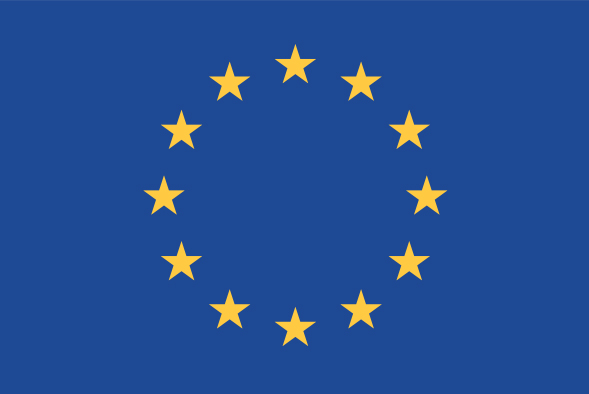Dr Janez Sušnik, from the IHE Delft Institute for Water Education and Coordinator of NEXOGENESIS, provides insights on stakeholder engagement, governance analysis, and co-creation to enhance WEFE Nexus management
In the July 2024 edition, the Water-Energy-Food-Ecosystems (WEFE Nexus), was introduced as a coherent interconnected resource system, strongly interacting with ecosystems (to form the WEFE Nexus), and supporting societal development.
The WEFE Nexus is extraordinarily complex, with each sector interacting with the other sectors and being affected by ‘externalities’ such as the impacts of climate change and socio-economic developments, which modulate resource demand, consumption, and exploitation, and in so doing, lead to degrading ecosystems. Impacts, actions, and changes in one part of this interconnected system have ‘ripple’ effects throughout the rest of the system.
Therefore, when considering the WEFE sectors, in our modern hyperconnected society, we cannot think about each in isolation without considering the impacts on the other sectors.
A single-sector, silo approach to natural resource management is insufficient, though dominating. However, attaining cross-sectoral coherence (i.e., achieving policy goals while not causing detrimental impacts to other sectors) in policy formulation and communicating those messages effectively is exceptionally challenging. This is true even when considering the implications of just one policy, let alone multiple policies that themselves may be interacting and have conflicting objectives across resource sectors.
WEFE research and policy
The European Commission Horizon 2020 research project, “Facilitating the next generation of effective and intelligent water-related policies utilising artificial intelligence and reinforcement learning to assess the water-energy-food-ecosystem (WEFE) nexus” (NEXOGENESIS), is researching the WEFE Nexus system in five case studies (Nestos-Mesta river basin, Bulgaria/Greece; Lielupe river basin, Lithuania/Latvia; Jiu river basin, Romania; Adige river basin, Italy; Inkomati-Usuthu Water Management Area, South Africa), focussing on how machine learning techniques can be used to support policy analysis and decisions in the context of multiple resources and an uncertain future.
In this vein, NEXOGENESIS explores the potential impacts of many policies being implemented across WEFE sectors to achieve multiple, sometimes conflicting, goals. A core ingredient in NEXOGENESIS is the stakeholder engagement and co-creation process, with significant project activities dedicated to policy/governance analyses, stakeholder engagement and co-creation processes, and case study coordination activities. Dedicated case study lead partners from the case study areas play a crucial role in identifying and engaging stakeholder groups, hosting local stakeholder workshops, and providing expert feedback alongside that of stakeholders.
Stakeholder engagement is crucial
The importance and effort involved in the stakeholder engagement and co-creation process cannot be underestimated. A considerable portion of the project time and budget is allocated to ensuring a consistently strong process throughout so that, in the end, policy recommendations and actions towards more holistic, integrated natural resources management are more likely to be relevant, heard, and, ideally, implemented.
The overall stakeholder engagement and policy recommendation process in NEXOGENESIS can be summarised into five main stages:
- Stakeholder identification and analysis.
- This includes developing a stakeholder register for every case study, in which stakeholders are identified, with help from local case study leads, and then analysed in terms of their power and interests in relation to the project goals. In addition, in NEXOGENESIS, stakeholders are classified into three tiers, from the most important, interested, and active to those who wish only to be informed about the project’s progress.
- Initiating stakeholder co-creation.
- In this stage, stakeholders’ problems, perceptions, solutions, and policy preferences are identified in a workshop setting. Also, in this stage, the relevant governance and policy systems in each case study are assessed, especially looking for entry points to facilitate change and to identify opportunities and barriers for any potential stakeholder agreements on working together to foster the adoption of stakeholders’ acceptable policy options.
- Parallel to this work, biophysical WEFE Nexus linkages are analysed to help inform subsequent model development, and initial data are collected. Such data and models feed the development of a decision support tool powered by machine learning and artificial intelligence (the NEXOGENESIS policy assessment tool – NEPAT) that facilitates stakeholders’ dialogue towards the identification of acceptable policy options.
- Co-creation of potential stakeholder agreements.
- In this stage, potential policy options are explored through the NEPAT tool. Outputs are discussed in a facilitated workshop setting with stakeholders to narrow down the options to feasible “policy packages”, which are subsequently ‘validated’ by stakeholders as being acceptable and fit for purpose. Furthermore, any actions necessary to foster potential uptake and adoption are discussed, clarified and crystallised into a governance roadmap for the adoption of the selected policies.
- These elements all feed into a significant aim of NEXOGENESIS: to secure at least one stakeholder agreement, comprising of a governance roadmap encompassing a timeline of actions and actors to promote uptake of identified policy packages and a ‘commitment declaration’, in which stakeholders agree (informally) to work towards actions identified towards holistic, integrated natural resources management.
- Facilitating stakeholder co-creation.
- This stage runs in parallel with stages 2 and 3. The purpose of this activity is to coordinate all the case study stakeholder workshops and engagement activities to ensure that they run smoothly and to liaise with the technical modelling and machine learning work to ensure that what those aspects deliver is relevant for feedback and discussion with the stakeholder groups.
- Implementation of agreements.
- This stage runs after NEXOGENESIS ends and aims to see the stakeholder agreement(s) identified in stage 3 implemented in practice. The time and effort put into stakeholder activities in NEXOGENESIS hope to ensure that uptake and implementation in practice are more likely to occur.
Opportunity for Nexus resources management
Clearly, there is no binding agreement between stakeholders to implement identified policies; however, through the intense stakeholder co-creation activities throughout the project, which includes bringing new stakeholders together, NEXOGENESIS is well placed to deliver actionable policy recommendations to the five project case studies and to put identified and validated policies in good stead for potential consideration or implementation in real-world settings. This in itself would represent a considerable opportunity in WEFE Nexus resources management.
Additional author: Dr Stefania Munaretto, KWR Water Research Institute. NEXOGENESIS Partner.

This work is licensed under Creative Commons Attribution-NonCommercial-NoDerivatives 4.0 International.



